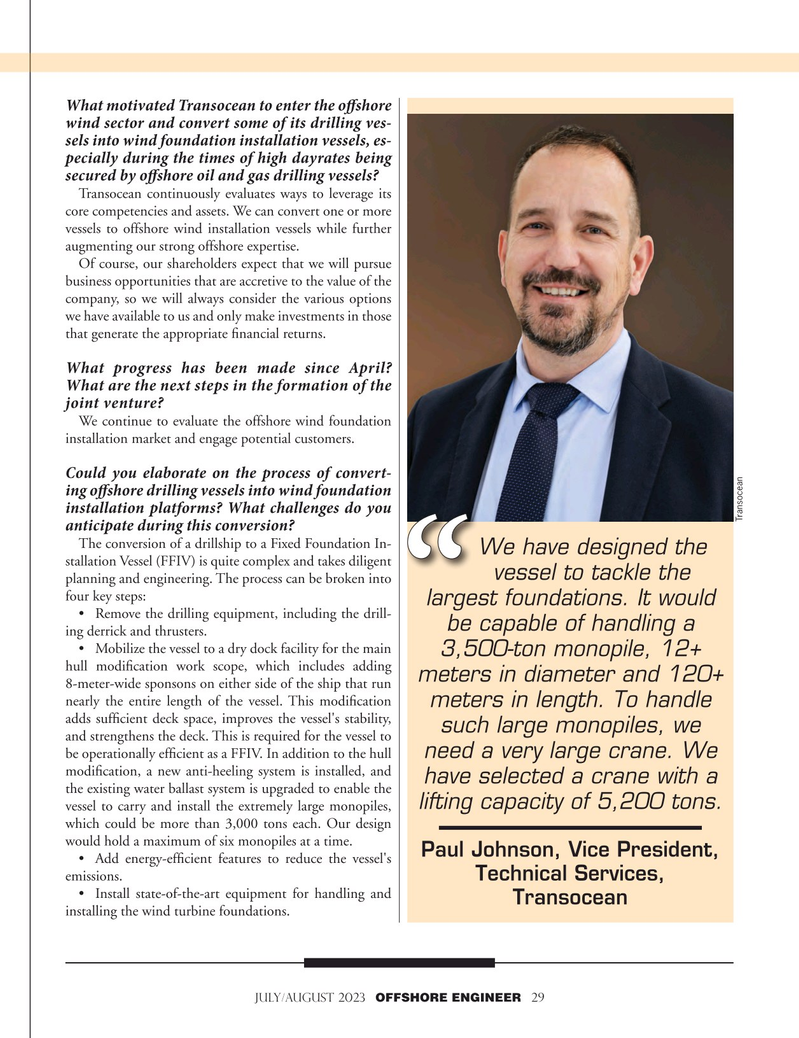
Page 29: of Offshore Engineer Magazine (Jul/Aug 2023)
Read this page in Pdf, Flash or Html5 edition of Jul/Aug 2023 Offshore Engineer Magazine
What motivated Transocean to enter the ofshore wind sector and convert some of its drilling ves- sels into wind foundation installation vessels, es- pecially during the times of high dayrates being secured by ofshore oil and gas drilling vessels?
Transocean continuously evaluates ways to leverage its core competencies and assets. We can convert one or more vessels to offshore wind installation vessels while further augmenting our strong offshore expertise.
Of course, our shareholders expect that we will pursue business opportunities that are accretive to the value of the company, so we will always consider the various options we have available to us and only make investments in those that generate the appropriate fnancial returns.
What progress has been made since April?
What are the next steps in the formation of the joint venture?
We continue to evaluate the offshore wind foundation installation market and engage potential customers.
Could you elaborate on the process of convert- ing ofshore drilling vessels into wind foundation installation platforms? What challenges do you
Transocean anticipate during this conversion?
The conversion of a drillship to a Fixed Foundation In-
We have designed the stallation Vessel (FFIV) is quite complex and takes diligent vessel to tackle the planning and engineering. The process can be broken into four key steps: largest foundations. It would • Remove the drilling equipment, including the drill- be capable of handling a ing derrick and thrusters.
• Mobilize the vessel to a dry dock facility for the main 3,500-ton monopile, 12+ hull modifcation work scope, which includes adding meters in diameter and 120+ 8-meter-wide sponsons on either side of the ship that run nearly the entire length of the vessel. This modifcation meters in length. To handle adds suffcient deck space, improves the vessel's stability, such large monopiles, we and strengthens the deck. This is required for the vessel to be operationally effcient as a FFIV. In addition to the hull need a very large crane. We modifcation, a new anti-heeling system is installed, and have selected a crane with a the existing water ballast system is upgraded to enable the lifting capacity of 5,200 tons.
vessel to carry and install the extremely large monopiles, which could be more than 3,000 tons each. Our design would hold a maximum of six monopiles at a time.
Paul Johnson, Vice President, • Add energy-effcient features to reduce the vessel's emissions.
Technical Services, • Install state-of-the-art equipment for handling and
Transocean installing the wind turbine foundations. july/august 2023 OFFSHORE ENGINEER 29

 28
28

 30
30